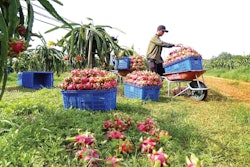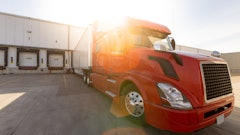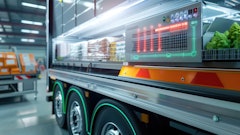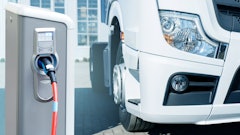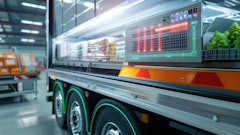In developed economies we take for granted that fresh, chilled and frozen foods have been properly maintained in a controlled environment from farm-to-fork. For example, the vast majority of bananas sold in the United States are imported from Central and South America in refrigerated containers, a journey that by sea alone typically takes 1-3 weeks. At Carrier Transicold, we work closely with banana growers and shippers to manage and extend the cold chain, so that desired ripeness levels are reached while the fruit is traveling over oceans and roads.
In contrast, the concept of maintaining constant temperature is relatively new to emerging economies, where we see substantial challenges to building the cold chain, with many key elements lacking or underdeveloped. These include infrastructure, access to credit, advisory capacity for smallholder farms, coordination among participants, proper training to operate and maintain equipment, awareness of the link between food safety and the cold chain, low consumer demand and understanding about the advantages of refrigeration.
These challenges can create a self-fulfilling prophecy in emerging economies, where lower overall quality of perishable foods is accepted as the norm, modern retail penetration is typically low, small family-owned stores and open-air markets are prevalent, and fruit and vegetable producers are often reluctant to invest in cold chain technology due to the seasonality of the business. All of these reasons work together to create an environment where the cold chain remains incomplete.
In developed economies we take for granted that fresh, chilled and frozen foods have been properly maintained in a controlled environment from farm-to-fork. For example, the vast majority of bananas sold in the United States are imported from Central and South America in refrigerated containers, a journey that by sea alone typically takes 1-3 weeks. At Carrier Transicold, we work closely with banana growers and shippers to manage and extend the cold chain, so that desired ripeness levels are reached while the fruit is traveling over oceans and roads.
In contrast, the concept of maintaining constant temperature is relatively new to emerging economies, where we see substantial challenges to building the cold chain, with many key elements lacking or underdeveloped. These include infrastructure, access to credit, advisory capacity for smallholder farms, coordination among participants, proper training to operate and maintain equipment, awareness of the link between food safety and the cold chain, low consumer demand and understanding about the advantages of refrigeration.
These challenges can create a self-fulfilling prophecy in emerging economies, where lower overall quality of perishable foods is accepted as the norm, modern retail penetration is typically low, small family-owned stores and open-air markets are prevalent, and fruit and vegetable producers are often reluctant to invest in cold chain technology due to the seasonality of the business. All of these reasons work together to create an environment where the cold chain remains incomplete.
At the recent Carrier World Cold Chain Summit, we learned that Vietnam has a low application rate of cold chain-to-fresh food products, which is quite common in developing economies. With many providers and disconnected operating methods, breaks in the cold chain occur frequently. Unregulated supply chain providers often take shortcuts to save money, resulting in lower quality perishable foods.
But emerging countries are not going to suddenly replicate the cold chain technologies used in developed countries. We need to understand and appreciate their challenges. What do they have, where do they have it, and how are they using it? Where are the gaps, and how can we demonstrate the benefits of reducing them? How should our products be adapted to suit local conditions, and how can we make them more affordable to take the focus off of short-term cost pressures versus investment for longer-term income through reduced food loss and improved food safety and quality?
These are the challenges that truly excite us. We believe that through better collaboration with local participants, such as the agreement we recently signed with Vietnam’s Ministry of Agriculture and Rural Development (MARD), we can assist in proving the triple win of the sustainable cold chain as a means to increasing sales and profits, reducing food waste and the associated CO2 emissions, and feeding more people.






